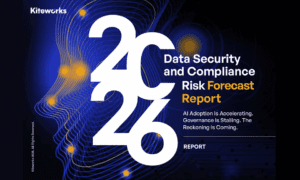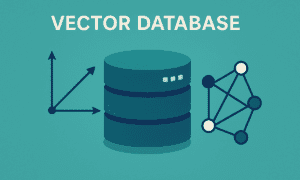In the modern digital economy, a profound paradox has emerged. Society is witnessing a golden age of innovation, with advancements in artificial intelligence, data analytics, and global connectivity creating unprecedented value and convenience.
This progress, however, is fueled by vast quantities of personal data, giving rise to a parallel and deeply felt societal anxiety about privacy. The prevailing narrative has long been one of defense: building higher firewalls, encrypting databases, and responding to breaches after they occur.
This reactive posture is proving to be fundamentally inadequate for the complexities of the 21st century. A paradigm shift is underway, moving beyond the simple protection of data toward a proactive, foundational approach that engineers privacy into the very DNA of technology. This is not about restricting the use of data, but about designing systems that enable its safe, ethical, and innovative use by default.
At the forefront of this critical transformation is Mamta Nanavati, a leading practitioner and thinker in the field of privacy engineering. With a career dedicated to embedding privacy principles into complex software systems, she has become a pivotal voice advocating for a new philosophy of technology development.
Nanavati’s perspective is that privacy is not a feature to be added or a compliance box to be checked, but a non-negotiable attribute of software quality, as fundamental as performance, security, and reliability. She argues that in an era where trust is the ultimate currency, the ability to build systems that respect user privacy by design is the most significant competitive differentiator an organization can possess.
Nanavati’s expertise illustrates how privacy engineering moves from abstract theory to concrete engineering results. Her approach demonstrates practical methods to translate conceptual principles into real-world applications, effectively bridging theory and implementation.
A shift in focus
The journey into privacy engineering often begins with compliance but evolves into a deeper understanding of user rights and ethical design. For Nanavati, this transition was catalyzed by direct experience in the messaging technology sector, where the need to protect user data was paramount.
She explains, “Privacy engineering became a core focus in my work while I was at a messaging technology company where I needed to ensure messaging products were privacy compliant. Initially, I approached privacy as a compliance requirement, but my perspective shifted when I realized it’s fundamentally about respecting users’ rights to control their data.”
This deeper perspective reframes the relationship between security and privacy, recognizing that they are related but distinct disciplines. This reflects a broader trend, as studies show a majority of consumers are concerned about their online privacy.
“The analogy I often use compares privacy to home security—it’s not just about preventing unauthorized access, but also about controlling what authorized parties can do with access they’ve been granted,” Nanavati states. “What drew me to this intersection was recognizing that privacy requires both technical innovation and ethical consideration, challenging engineers to think beyond traditional security measures to truly protect users.”
Integrating privacy in development
To be effective, privacy cannot be an afterthought; it must be woven into the fabric of the software development lifecycle.
Nanavati shares that In one of her past roles, this integration began with a foundational understanding of how data moved through their systems, a critical first step for any organization. “We integrated privacy initiatives into the development lifecycle by first documenting entire data flow pipelines to identify where personally identifiable information existed in our systems. For our messaging platform, we re-architected parts of the framework to support privacy requirements while maintaining functionality.”
In smaller organizations or those working with legacy systems, this journey can begin incrementally. “A phased approach—such as starting with data mapping and minimum data collection practices—can yield significant privacy gains without overwhelming budgets or disrupting operations. Over time, organizations can build toward comprehensive privacy engineering, even with limited resources.”
A key element of this integration involves building technical safeguards that operate automatically, reducing the risk of human error and ensuring consistent protection. This requires close collaboration across different functions to translate legal and product requirements into engineering reality. Identifying privacy champions across engineering, product, and legal teams helps drive this change, fostering a culture of shared accountability.
“We also developed custom logging layers that could automatically redact sensitive data before it reached third-party systems,” Nanavati notes. “This required collaboration between engineering teams, legal, and product to establish clear roadmaps for privacy implementation, especially when working with legacy systems that weren’t designed with privacy in mind.”
Balancing experience and security
A common misconception is that enhancing privacy must come at the expense of user experience. However, a core tenet of modern privacy engineering is the pursuit of “positive-sum” solutions that improve both privacy and functionality.
This requires creative thinking and a focus on data minimization. “I approach balancing user experience with security by focusing on what I call ‘positive-sum’ solutions—finding ways to maintain functionality while enhancing privacy,” Nanavati explains. “For example, we needed to maintain message threading functionality without unnecessarily storing phone numbers.”
This approach often leads to innovative technical solutions that achieve the desired outcome with less data. By questioning the necessity of every piece of data collected, teams can often discover more elegant and privacy-preserving architectures.
“Rather than removing the feature entirely, we developed a secure hashing system where only the correlation between messages was preserved without storing the actual phone numbers,” Nanavati says. “Similarly, for scaling infrastructure based on regional traffic patterns, we realized we only needed the regional portion of phone numbers rather than complete numbers. When implementing privacy-preserving techniques like hashing, it’s important to use best practices—such as non-reversible, salted cryptographic hashes—to prevent the risk of linkage or reverse engineering attacks. Privacy solutions must be robust, not just clever.”
“Of course, there are times when privacy requirements do require difficult trade-offs, such as modifying or even removing a feature, delaying a project, or facing stakeholder resistance. These challenges are real, but they often lead to more thoughtful, innovative solutions that serve both users and the organization better in the long run.”
Privacy by design in practice
Embedding privacy by design into an engineering culture requires a set of practical, repeatable steps that transform abstract principles into concrete actions. The process starts with a fundamental shift from a reactive to a proactive mindset, supported by comprehensive documentation. “For organizations beginning this journey, leveraging established frameworks like the NIST Privacy Framework or ISO/IEC 27701 can provide a solid foundation for operationalizing privacy by design.”
According to Nanavati, engineering teams can embed privacy by design by first adopting a proactive rather than reactive approach, considering privacy during the initial design instead of as an afterthought. It is also crucial to document data flows comprehensively, identifying all places where personal data enters, is processed, or leaves the systems.
Beyond initial design, privacy by design extends to the entire data lifecycle, including data deletion and user access rights, which are key components of regulations like the GDPR’s Article 25 on Data Protection by Design and by Default. It also requires making privacy a continuous concern, much like quality assurance.
“Implement mechanisms for data deletion once its purpose has been served, and build systems that support data portability, allowing users to extract or delete their information,” Nanavati advises. “Finally, institute regular privacy reviews as part of your quality assurance process, similar to security reviews.”
“To measure progress and maintain accountability, we track privacy incident rates, user trust metrics, and audit outcomes. These insights drive continuous improvement, enabling organizations to adapt to new challenges and raise their privacy standards over time.”
Third-party library risks
In modern software development, teams rely heavily on third-party libraries to accelerate development, but these dependencies can introduce significant and often overlooked privacy and security risks. The stakes are high, as the average cost of a data breach continues to climb to record highs.
“Third-party libraries present significant challenges to privacy and security in SaaS platforms,” Nanavati states. “One major issue I’ve encountered is with logging—we might carefully redact sensitive information in our logs, but when passing data to third-party libraries for processing, exceptions might cause them to log the complete data objects with sensitive information intact.”
To mitigate these risks, engineering teams must treat third-party components with the same rigor they apply to their code, which may involve building protective layers around them. The responsibility for data protection ultimately remains with the organization that collects the data.
“In my previous role, we had to build custom logging wrappers around third-party libraries to ensure PII wasn’t inadvertently exposed,” Nanavati recalls. “Additionally, when using third-party processors that handle data in the cloud, you must evaluate their compliance standards since you remain responsible for the data. Process should include rigorous vendor assessments both before onboarding and on a recurring basis. This helps ensure that supply chain aligns with our privacy standards and that we stay vigilant against new threats.”
Constraints fostering innovation
While often viewed as a limitation, privacy requirements can serve as a powerful catalyst for innovation, forcing teams to rethink traditional approaches and develop more creative solutions. Nanavati points to a project involving a messaging platform as a prime example of how privacy constraints led to a superior design.
“One significant project involved redesigning our messaging platform to maintain session persistence while complying with privacy requirements,” she says. “Originally, we stored complete phone numbers to thread conversations from the same sender, providing a better user experience, but privacy considerations forced us to rethink this approach since storing these identifiers unnecessarily created privacy risks.”
The solution involved moving away from storing raw personal data and instead using a cryptographic technique to achieve the same functional outcome. This not only solved the privacy problem but also resulted in a more elegant and secure architecture.
“Instead of abandoning the feature, we developed a hashing system where the originating phone numbers were hashed on the client side, and only these hashes were sent to our platform for correlation purposes,” Nanavati explains. “This allowed us to maintain the threading functionality without storing actual phone numbers.”
Navigating global regulations
The global privacy landscape is in constant flux, with new regulations emerging regularly. Attempting to chase compliance on a law-by-law basis is an inefficient and unsustainable strategy.
A more effective approach is to build a flexible architecture based on universal privacy principles, which requires a close partnership between legal and engineering teams. This proactive stance is validated by industry research, where a vast majority of organizations report that privacy laws have a positive impact on their business.
“While universal privacy principles provide a strong foundation, some regulations—such as China’s PIPL or various US state laws—can have unique or even conflicting requirements. Our strategy combines a global baseline with region-specific adaptations where necessary, in close coordination with legal experts.”
“To stay ahead of evolving privacy regulations, I maintain close partnerships with security, compliance, and legal teams to understand upcoming changes and their technical implications,” Nanavati says. “I believe in translating legal requirements into technical specifications that engineering teams can implement.”
This mindset fosters systems that are inherently more adaptable to regulatory changes. “I encourage a mindset shift where privacy is viewed as a product feature rather than a limitation,” Nanavati advises. “By documenting data flows comprehensively and implementing purpose-based access controls, teams develop systems that are inherently more adaptable to regulatory changes.”
An engineering mindset shift
For engineers who want to become champions of privacy within their organizations, the most important changes are not about learning a specific tool but about adopting a new mindset. This begins with challenging the long-standing “collect everything” mentality that has dominated the tech industry.
“For engineers aspiring to champion privacy, I recommend several foundational mindset shifts,” Nanavati recommends. “Challenge the ‘collect everything, figure out uses later’ approach that’s been common in tech, and instead, adopt purpose-specification thinking—only collect data for specific, defined purposes and only keep it as long as necessary.” “Driving this kind of change is rarely easy; cultural resistance, time pressures, and resource constraints are real. In my experience, executive sponsorship, ongoing training, and consistent reinforcement are critical to building and sustaining a privacy-first culture.” “Learning to plan for privacy edge cases—such as handling deletion requests from backup systems or ensuring no accidental dark patterns emerge in user interfaces is also imperative. These complex scenarios require technical creativity and ongoing vigilance.”
Ultimately, this new mindset is about redefining the engineer’s relationship with user data, moving from a sense of ownership to one of stewardship. This commitment to trust is not just an ethical imperative but a financial one, with studies showing a significant return on investment for privacy spending.
“Most importantly, view yourself as a data steward rather than a data owner,” Nanavati concludes. “The data belongs to users who have entrusted it to your care, and your responsibility is to respect that trust through technical safeguards and ethical practices. While compliance provides a necessary baseline, genuine ethical leadership in privacy builds lasting trust and market advantage.”
In the final analysis, the journey from reactive data protection to proactive privacy engineering is more than a technical upgrade; it is a strategic evolution. As Nanavati’s insights reveal, this shift redefines the very nature of quality software and responsible innovation.
It moves privacy from the periphery of legal compliance to the core of product design, business strategy, and brand identity. In an economy increasingly powered by data, the organizations that will thrive and lead are those that recognize trust as their most valuable asset.
They will be the ones who go beyond mere compliance to champion privacy as a fundamental human right and an engineering discipline. By embedding privacy into the fabric of their culture and the code of their products, they are not just mitigating risk; they are building a more resilient, more valuable, and more trustworthy digital future for everyone.



































